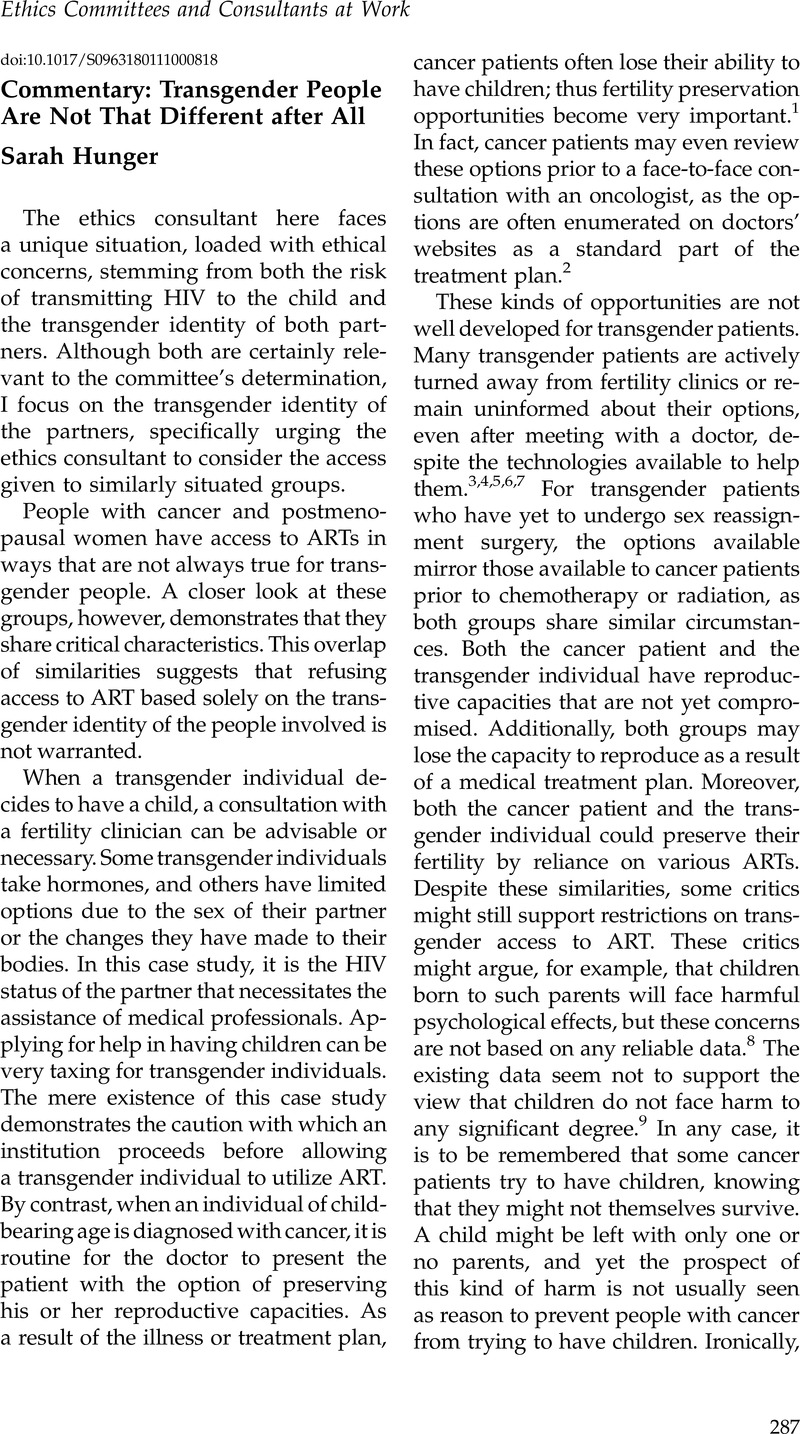Published online by Cambridge University Press: 29 February 2012

1. Robertson, JA. Cancer and fertility: Ethical and legal challenges. J Nat Cancer Inst Monogr 2005;34:104–6.CrossRefGoogle Scholar
2. Kolb, B.Preserving reproductive options in oncology patients. Huntington Reproductive Center; available at http://www.infertility.org/reproductive-options-cancer-patients.html (last accessed 4 Oct 2010).Google Scholar
3. de Sutter, P.Gender reassignment and assisted reproduction: Present and future reproductive options for transsexual people. Human Repro 2001;16:612–4.CrossRefGoogle ScholarPubMed
4. de Sutter, P.Recommendations for transgender health care. Transgender Law Center 2005;7.Google Scholar
5. Transgender Law Center. 10 Tips for Working with Transgender Individuals. 2005; available at http://www.transgenderlawcenter.org/pdf/Provider%20fact%20sheet.pdf (last accessed 4 Oct 2010).
6. Transgender Law Center. Transgender health and the law: Identifying and fighting health care discrimination. Transgender Law Center 2004;1; available at http://www.transgenderlawcenter.org/pdf/Health%20Law%20fact%20sheet.pdf (last accessed 4 Oct 2010).
7. McGuinness, S, Alghrani, A.Gender and parenthood: The case for realignment. Med L Rev 2008;16:261–83.CrossRefGoogle ScholarPubMed
8. Murphy, TF.The ethic of helping transgender men and women have children. Perspect Biol Med 2010;53:46–60.CrossRefGoogle ScholarPubMed
9. Green, R.Sexual identity of 37 children raised by homosexual or transsexual parents. Am J Psychiatry 1978;135:692–7.Google ScholarPubMed
10. Ethics Committee of the American Society for Reproductive Medicine. Oocyte donation to postmenopausal women. Fertil Steril 2004;82:S254–5.
11. See note 10, Ethics Committee of ASRM 2004.
12. See note 10, Ethics Committee 2004.
13. See note 7, McGuinness, Alghrani 2008.
14. See note 10, Ethics Committee of ASRM 2004.